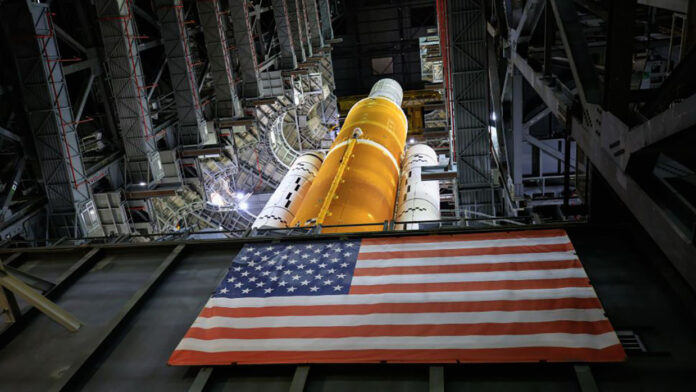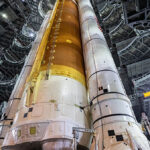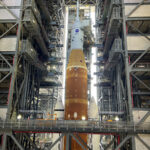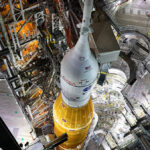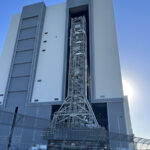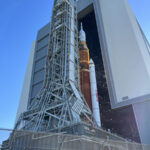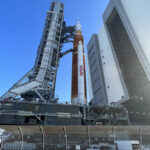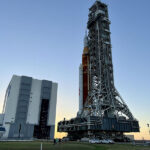There was a lot happening in the world yesterday with St. Patrick’s Day and Spring Break, but something extraordinary also occurred at Kennedy Space Flight Center in Merritt Island, Florida.
Artemis I, the magnificent new generation megarocket that will take mankind back to the moon for a longer stay, and eventually on to Mars, could be seen rolling on down the highway to Launch Complex 398 today.
The entire process was documented on NASA’s Kennedy Space Center’s social media.
They opened one-by-one, the three Vehicle Assembly Building (VAB) bay doors to fully reveal the rocket’s magnificence poised in High Bay 3 of the VAB.
Then the support platform was retracted and once outside the VAB, she paused once so the teams could reposition the Crew Access Arm.
It was a stunning sight as the fully stacked rocket began its four-mile parade to the launchpad where she prepares for a wet rehearsal on April 3.
A wet dress rehearsal (as opposed to a dry run) consists of fueling the SLS (Space Launch Systems) core stage and putting the rocket through a practice countdown, stopping just short of the ignition of its four RS-25 engines.
Artemis I was loaded onto Crawler-transporter 2 to take its iconic crawl to the launchpad – the space shuttle missions, and Apollo Saturn V rockets took this same ride.
Artemis I will be an unmanned test flight for flying a manned Orion spacecraft on Artemis II in 2023.
This rocket is awe-inspiring. The core stage is 212 feet tall and holds 700,000 gallons of liquid oxygen and liquid hydrogen used to propel the core stage, using four RS-25 engines that produce 2.5 million pounds of thrust.
That accompanies the two most powerful solid rocket boosters in the world, recently tested in the New Mexico desert. The power of one of the boosters, each having 3.6 million pounds of thrust, provides 75% of the thrust needed to escape earth’s gravity field on initial takeoff.
Fully stacked and integrated, SLS stands 322 feet tall and boasts 8.8 million pounds of thrust – enough to hoist 59,000 pounds in translunar injection. The twin boosters and RS-25 engines make SLS 15% more powerful than the Saturn V launch rocket.
Don’t miss out! Subscribe to our email newsletter to have all our smart stories delivered to your inbox.


